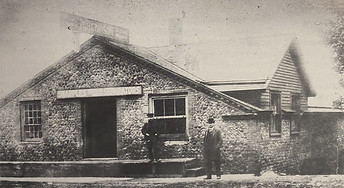
Audio Tour
Commerce Over Time

Presented by
Bob Corby

Businesses changed over time for example, up where the bridge is on Main Street, there was a cobblestone warehouse. There was a thing called the forwarding house and in the 19th century, after the canal opened up, each town had forwarding houses: what Amazon is today. If you wanted a cast iron stove to replace your beehive oven, you contacted a vendor that might be in New York City or Syracuse. You ordered the stove. It came on the canal. They brought it here to a warehouse in the forwarding house. Then you went to the forwarding house, you paid a fee for the forwarding house, and you picked up your stove.
The cobblestone warehouse was around where the boats are today.

The canal was cost effective for bulk things but the railroad for manufactured goods was a better way of transporting. So after the railroads came through and started to dominate commercial transportation for many things, because they were quicker than the canal, the forward housing went away and the businesses changed.
This business was eventually sold to my great, great grandfather, Samuel Hutchinson, who operated a produce business here in Pittsford. And in the 19th century and well into the 20th century, in addition to dairy farming, growing produce and fruit was big business because of the highly productive soils.

Most farms had apples. In the village at one point, there were six dry houses. Because there was no refrigeration, people dried fruit so they had fruit through the winter and that was what Samuel did here. His business was one of the businesses that was destroyed and moved across the canal. And we'll talk about that later on.
One of the many dry houses in Pittsford.